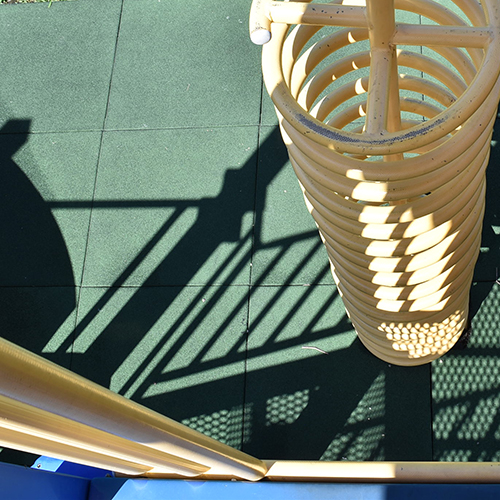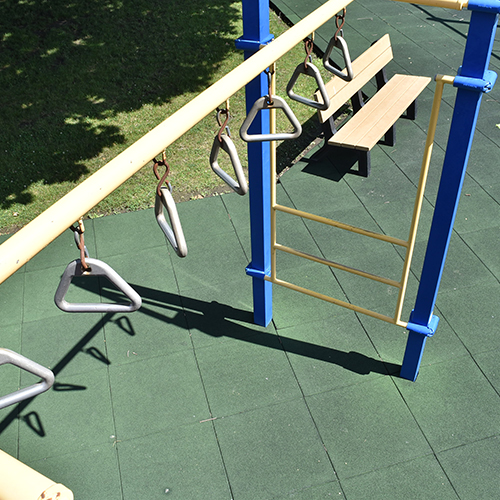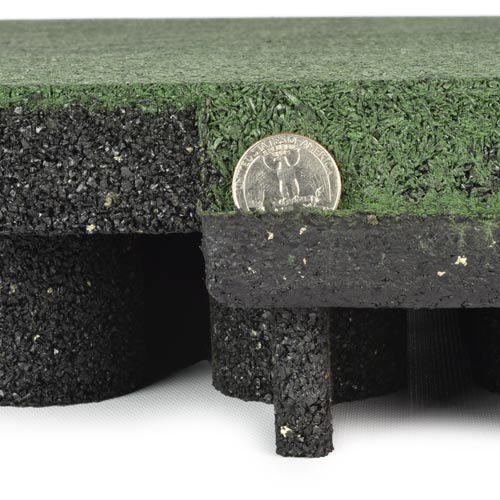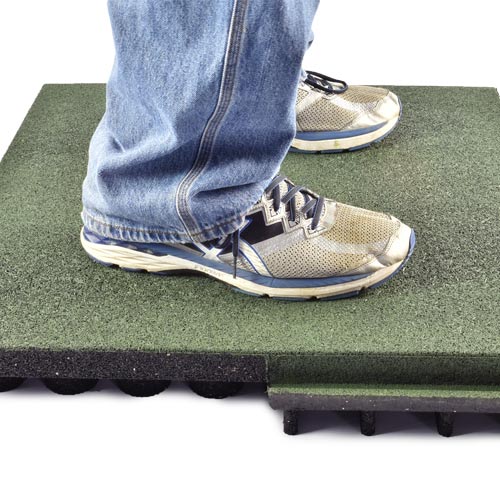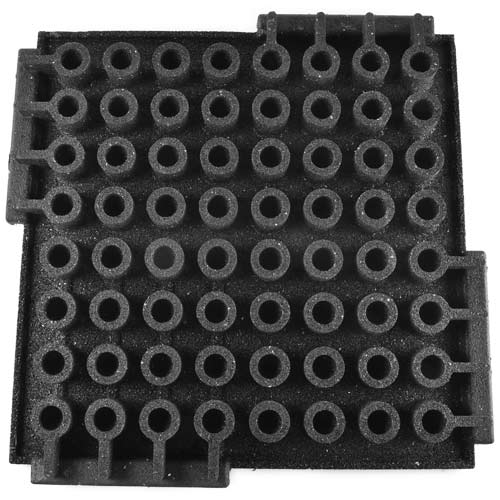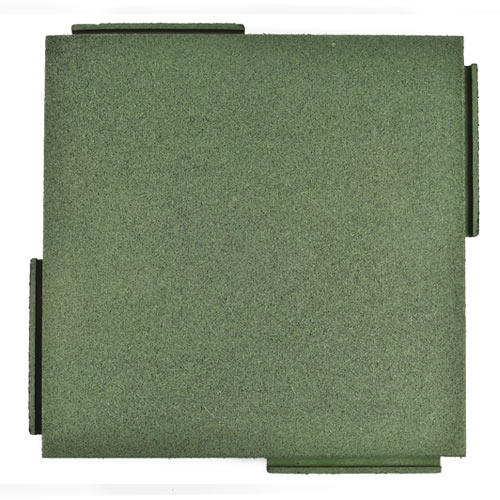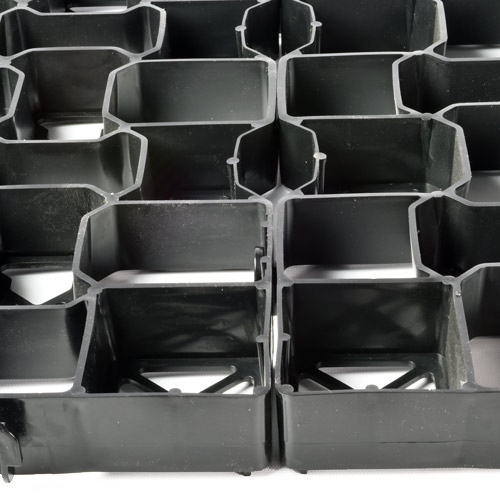How to Install Pavers Over Grass
Related Product: Sterling Playground Tile Solid Colors 3.25 Inch x 2x2 Ft.
Having a flatter grassy area to create the installation is an important starting point. Although someone can perform the steps required to install pavers over grass on a slightly uneven grassy area, it will be difficult to keep the pavers tightly connected when the grass surface underneath is undulating.
What Types of Pavers Work Well Over the Top of Grass for a Playground Space?
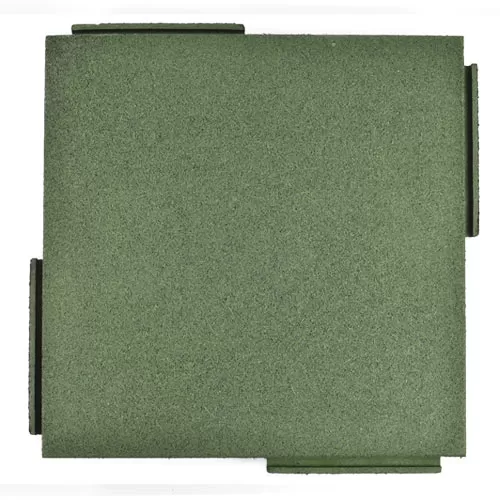 For creating a safe playground space over grass, the Sterling Playground Tiles will be an excellent choice. It measures 3.25 inches in thickness, which delivers outstanding durability. These tiles have a limited lifetime manufacturer warranty.
For creating a safe playground space over grass, the Sterling Playground Tiles will be an excellent choice. It measures 3.25 inches in thickness, which delivers outstanding durability. These tiles have a limited lifetime manufacturer warranty.
The tiles have a 6-foot fall height rating, which means children playing on playground equipment will be safer with these rubber tiles underneath the swing set or jungle gym than with natural grass underneath.
Installation of these pavers is an easy process when going over grass, according to customer Tina of Marysville, Wash. If the ground is relatively flat on its own, the installer will not need to lay out any grid tiles (which we’ll discuss later) or to dig up the area with a shovel to even it out. Remember, the rubber tiles will have a bit of flex to them to handle slightly uneven ground.
Start in one corner of the planned installation area. Lay out the first tile with the interlocking edges aimed in the direction where the installation will continue moving.
Lay the next tile in the line and connect it to the original tile through the interlocking edges. Pop them together with a foot or hand to ensure a tight fit without requiring glue.
As the tiles fit together, the interlock system will not be visible, hidden underneath the edges of the tile. This means the final installation will have a clean look, as users will only see the straight lines between the tiles. If the ground underneath isn’t flat enough, though, the connected tiles may pull apart at the seams.
It’s best to plan the layout space so that the installer doesn’t need to cut any tiles. However, if the tiles need to be cut, straight cuts can easily be done using a sharp utility knife, straight edge guide and a 2x4 board. Due to the thickness of the tiles, curved cuts will be more labor intensive.
Each of these tiles measures 2 by 2 feet, so laying out a space like 20 by 10 feet or 12 by 8 feet will simplify the installation without having to cut tiles, as would occur with a layout of 15 by 15 feet.
How to Prevent Erosion Under the Pavers
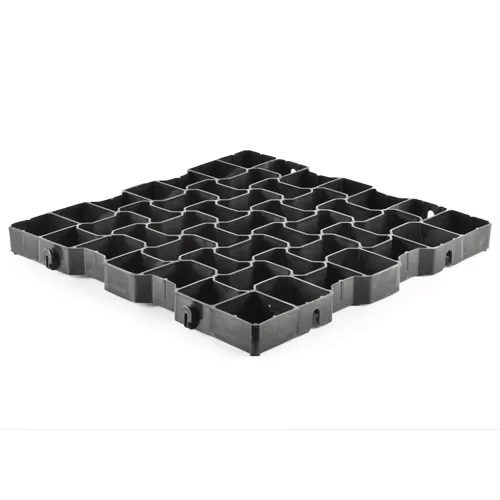 If the area for the planned layout has some uneven or muddy spots or is subject to erosion, the GeoGrid Cellular Paving System is a good starting point.
If the area for the planned layout has some uneven or muddy spots or is subject to erosion, the GeoGrid Cellular Paving System is a good starting point.
These open area tiles will hold the ground underneath the pavers tightly in place. They will reinforce and stabilize any ground, providing a sturdy location over which to lay on the pavers. The open spaces in the grid tile are permeable, so rainwater will naturally flow through them, soaking into the subsoil underneath.
With these grid tiles, installers can bury them 1.5 inches into the ground, filling the open spaces inside the polyethylene plastic grid with dirt. Then plant grass seed. It will grow inside the open spaces, creating an area that will not suffer erosion.
It’s also possible to just lay the grid tiles over the existing grass, creating a raised platform for your pavers once filled in with dirt, sand, stone or aggregate.
The installer then could lay out the paver tiles over the top of the grid, completing the process of installing pavers over grass. The grid tiles eventually will work their way into the soil.
Each tile measures 19.5 inches square and can withstand up to 35 tons of force per square foot. Whether using the area with the grid tiles installation for creating a walking path, a temporary roadway, or an area for a patio over grass, they can withstand the weight going over the top of them.
To cover a large area, just connect multiple grid tiles together with the interlocking edges, creating a sturdy surface over which to lay pavers.
Does the Ground Under the Pavers Have to Be Completely Flat?
One advantage to using rubber pavers when trying to determine how to install pavers over grass is that they will flex slightly to match the shape of the ground underneath them. This flex counteracts the effect of ground that isn’t completely flat, simplifying the installation process. That being said, a flat subsurface is always preferred and will perform better.For extremely uneven ground under the pavers, the installer can create a flatter area with the special grid tiles before starting the process of how to install pavers over grass. The rubber paver tiles then can go over the top of the grid tiles.
For a simple alternative to pavers, you may want to consider a perforated interlocking PVC decking tile such as Greatmats StayLock Tile or Ergo Matta Tiles. These outdoor tiles lock tightly together with a tab and loop connector system and have plenty of flexibility to contour to the existing subsurface.
